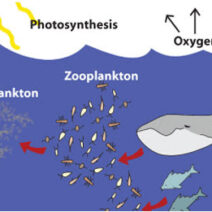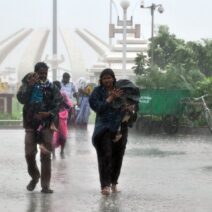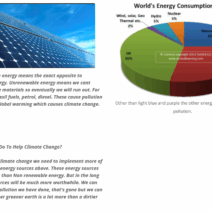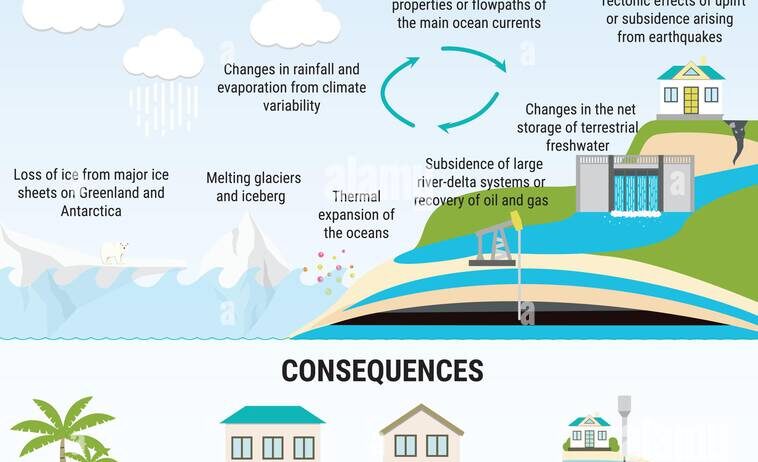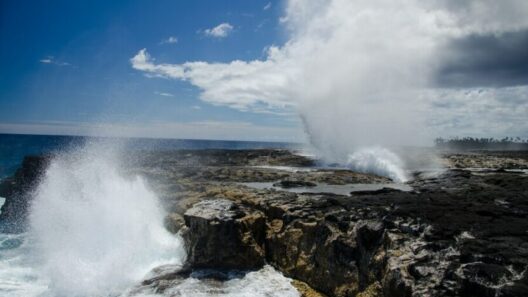In recent years, the phrase “rising sea levels” has become a familiar refrain. But why should this phenomenon elicit a sense of urgency? Isn’t the ocean just always there, quietly lapping at the shore? One might ask, what’s the big deal if a few inches of water creep onto the land? The reality is that rising sea levels present a formidable challenge, particularly for coastal areas. Understanding the risks associated with this daunting trend not only enlightens us but also compels action. The question thus arises: What implications does this slippery situation have for our shorelines, economies, and ecosystems?
Understanding the Mechanics: What Causes Sea Level Rise?
The immediate answer to what causes rising sea levels lies in the two main processes: thermal expansion and melting ice. As global temperatures rise, seawater expands—a phenomenon known as thermal expansion. With every degree increase in temperature, ocean water increases in volume, contributing to rising sea levels. Furthermore, the melting of glaciers and polar ice caps releases vast amounts of freshwater into the oceans. Both processes are exacerbated by climate change, a byproduct of human activities such as fossil fuel combustion, deforestation, and industrialization.
While these causes are scientifically substantiated, they stir a deeper contemplation: Are we prepared for the consequences of our actions? Coastal regions, home to millions of people and extensive ecosystems, noticeably bear the brunt of these changes.
Vanishing Shores: The Physical Impact on Coastal Regions
Rising sea levels manifest in various physical impacts on coastal areas. Erosion is perhaps the most immediate consequence. Beaches are gradually consumed, homes face the threat of inundation, and infrastructures are jeopardized. The United States alone has experienced more frequent coastal flooding, ranging from minor nuisance floods to catastrophic events that can displace entire communities. Coastal cities such as Miami and New Orleans are already experiencing the ramifications, creating a scenario that could soon become the norm rather than the exception.
Areas already classified as low-lying, such as Bangladesh and the Maldives, may find their very existence at risk. Inhabitants face the unthinkable: potential relocation and loss of cultural heritage as their lands succumb to the relentless advance of saltwater. Yet, it is not merely a question of geography or property; the psychological toll on displaced populations can devastate social structures and erode communal ties.
A Ripple Effect: Economic Repercussions of Rising Waters
The economic implications of rising sea levels extend beyond immediate property damage. As coastal areas become increasingly vulnerable, industries such as tourism, fishing, and real estate face systemic challenges. Hotels along coastal beaches, once thriving enterprises, may find themselves at risk of flooding or storm surges. This scenario can lead to a decline in tourist numbers, prompting ramifications that echo through local economies.
Moreover, the insurance industry will grapple with rising claims related to weather-related disasters, pushing premiums higher as insurers adapt to escalating risks. As affordability diminishes, the socio-economic fabric of coastal areas may degrade further, creating a chasm between those who can adapt and those who cannot. Hence, an unfortunate reality emerges: the more vulnerable communities face the steepest price of inaction.
Going Beyond Borders: Environmental Consequences
Beyond the immediate human concerns, rising sea levels pose significant threats to ecosystems and biodiversity. Saltwater intrusion can transform freshwater ecosystems into barren habitats unfriendly to native species. Wetlands, which act as critical buffers against storm surges, can be lost forever, resulting in diminished natural protection against severe weather events.
Coral reefs, the vibrant underwater ecosystems that support myriad marine species, are also at risk. Their survival is intricately linked to environmental stability, but with rising temperatures and increased sedimentation from coastal erosion, their plight grows precarious. The coral-dominated ecosystems serve not only as marine sanctuaries but also as crucial barriers against wave action, underscoring the multifaceted role they play in coastal resilience.
Confronting the Challenge: Adapting to a New Reality
The challenges imposed by rising sea levels may seem insurmountable, yet they compel innovative solutions. Adaptation strategies becoming increasingly vital include infrastructure improvements, such as constructing sea walls, restoring natural barriers like mangroves and wetlands, and implementing effective zoning laws to manage land use in vulnerable areas. However, such measures require meticulous planning and cooperation between governments, scientists, and communities.
Equally important is the role of education and awareness, enabling coastal residents to understand their risks and participate actively in mitigation efforts. Community-driven restoration projects not only safeguard local ecosystems but also create a sense of ownership and accountability among residents. Collectively facing this pressing reality is paramount to fostering resilience in coastal regions.
In conclusion, the rising sea levels present a multifaceted threat that encompasses not only physical alterations to landscapes but also socio-economic and ecological ramifications. As the ocean encroaches upon our shorelines, it offers a vivid reminder of the interplay between human actions and environmental outcomes. It begs a timeless question: Are we willing to stand by and let our coasts go quietly into the night? The imperative of collective action has never been more evident; the time to respond is now.
